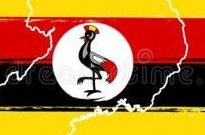
How Much Does A Cow Cost In Uganda
What Is A Cow?
Cattle are large, domesticated, cloven-hooved, herbivores. They are a prominent modern member of the subfamily Bovinae and the most widespread species of the genus Bos. Adult females are referred to as cows and adult males are referred to as bulls.
How Much Does A Cow Cost In Uganda
The cost of a cow will usually be somewhere between UGX 7601030.00 and UGX 19002575.00. But there are lots of factors that impact price. Calves or yearlings are less expensive. Usually – they cost less than half of what you’d pay for a more mature cow.
What Do You Know About A Cow In Uganda?
The color of a Jersey cow varies from dark brown to fawn and can have some white splashed in. A cow has 32 teeth. A cow will chew about 50 times in a minute, making their jaws move about 40,000 times a day. The main stomach of a cow, the rumen, holds up to 50 gallons of food that has been partially digested.
What Do Cows Not Like In Uganda?
They dislike the smells of dung and saliva, so when housed, their feeding area needs to be kept clean and smell fresh, not contaminated with dung, saliva or exudate from other cows’ noses.
What Are Cows Best Known For In Uganda?
Cattle are commonly raised as livestock for meat (beef or veal, see beef cattle), for milk (see dairy cattle), and for hides, which are used to make leather. They are used as riding animals and draft animals (oxen or bullocks, which pull carts, plows and other implements).
How Do You Know When A Cow Is Mad In Uganda?
The direct threat is head-on with head lowered and shoulders hunched and neck curved to the side toward the potential object of the aggression. Pawing with the forefeet, sending dirt flying behind or over the back, as well as rubbing or horning the ground are often components of the threat display.
How Hard Is It To Care For Cows In Uganda?
Cattle are relatively easy to take care of, and sanitary housing, good quality pasture, nutritious food, and plenty of sunshine will greatly reduce health problems. Having somewhere to scratch is important.
What Is The Friendliest Type Of Cow In Uganda?
The Hereford cow is a friendly and easy going breed among other breeds of cattle. They are known for their beef. The basics: Hereford cows have white faces and an easy-going disposition which makes them easy to care for and almost like pets.
How Can You Tell If A Cow Is Unhappy In Uganda?
But, more time spent standing, most often with an arched back and head and ears lowered is usually seen as a sign of discomfort or discontentment. Under duress, cattle will bellow, butt heads, or kick their hind legs. This is a sign that an animal is stressed, and the environment needs to be looked at.
How Do You Gain Cows Trust In Uganda?
If you handle them with patience, understanding and consistency, they learn to trust you. They know what to expect from you and what is expected of them. They are creatures of habit, and if you help them build acceptable patterns of behavior they can be very easy to handle.
Do Cows Get Cold In Uganda?
The ideal temperature range for dairy cattle is 25 to 65 F, according to the University of Missouri Extension. Even at temperatures of just 68 F they can start to feel heat stress. When temperatures dip below zero, yes, cows may get cold but Organic Valley farmers take special precautions to keep cows cozy.
Why Do Cows Moo All Night In Uganda?
Cows moo at night to communicate to the rest of the herd and, often, to protect them from some kind of danger that is lurking in the shadows.
What To Do When Cows Run At You In Uganda?
Remain calm and continue walking on quietly and quickly, trying to pass around them without making any startling movements. Cows will most likely leave you alone once they realize you are not a threat. If you detect an aggressive cow or a threatening group of cows, keep moving calmly and do not make direct eye contact.
Do Cows Need Shelter At Night In Uganda?
Cattle need only minimal shelter. During calving it is nice to have a place where the cow and newborn calf can get out of the elements for a day or two. It is good to have a place where they can find shade in hot weather and wind break from the cold.
